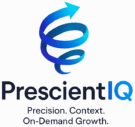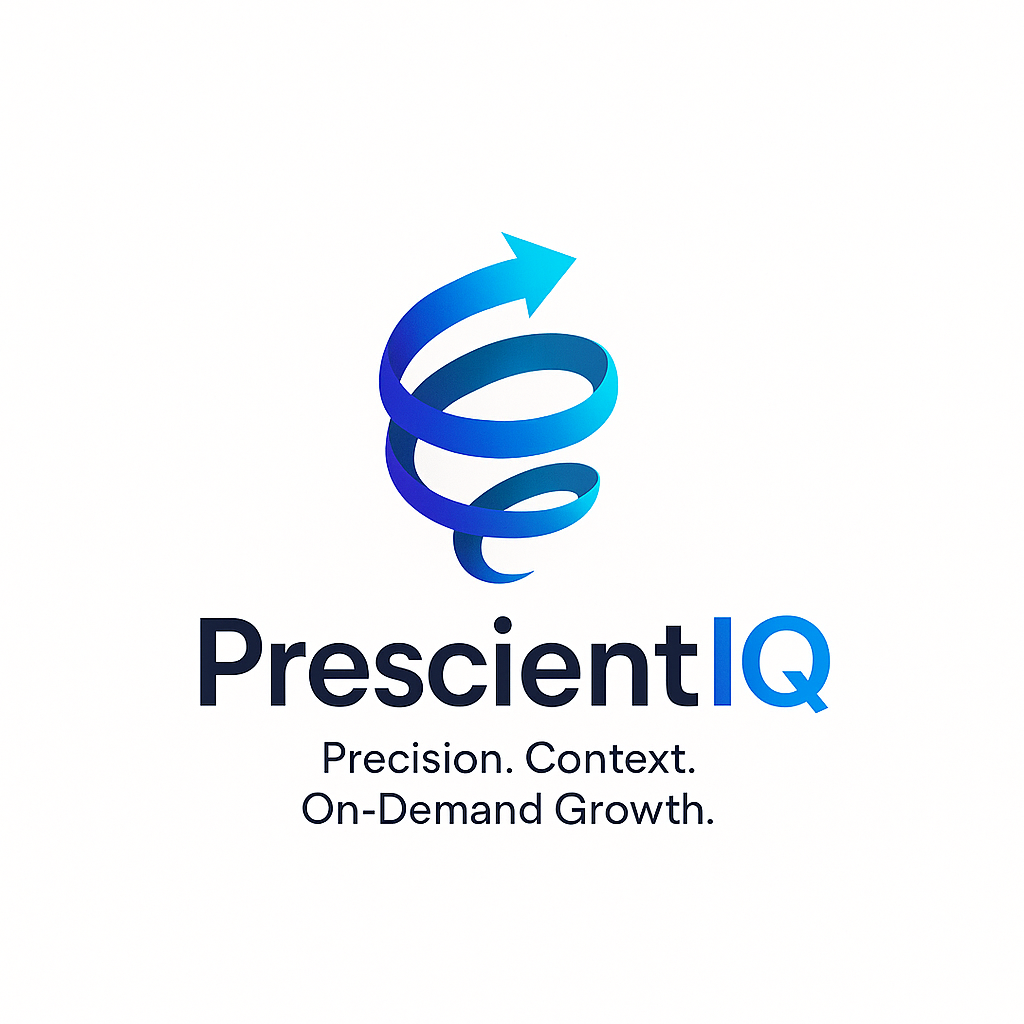Crafting the Future: An In-depth Guide to Product Roadmap For Startups
Learn how to Crafting the Future: An In-depth Guide to Product Roadmap For Startups
As the CEO of a swiftly expanding startup, planning and strategizing are concepts that should always be on your plate.
The ‘what,’ ‘why,’ ‘who,’ ‘when,’ and ‘how’ you manage your venture will map your route to success. One of your best compasses on this journey is a “product roadmap for startups.”
But what exactly is it, and how can it transform your business into a success?
The Definitive ‘What’: Decoding Product Roadmap for Startups
A product roadmap for startups is a strategic document that charts the path your company’s product or services will take from its current status into the future. It provides direction and constitutes a core pillar of any startup’s product planning efforts. The founder and start-up team must be thinking about a minimal viable strategy as well as a minimum viable product.
Moreover, it serves as a guiding beacon for stakeholders, mapping the course and anchoring your vision through the turbulence of your business journey.
Sure, here is an explanation of the importance of and how to decode a product roadmap for startups:
The Importance of Product Roadmaps for Startups
In the fast-paced and competitive world of startups, having a clear and well-defined product roadmap is essential for success. A product roadmap is a strategic plan that outlines the vision and direction for a product, detailing the features, enhancements, and iterations that will be developed and released over time. It serves as a guide for the entire team, ensuring that everyone is aligned on the product’s goals and objectives.
Benefits of a Product Roadmap for Startups:
- Alignment and Focus: A product roadmap provides a shared vision and direction for the entire team, ensuring everyone is working towards the same goals. This alignment helps to avoid confusion, duplication of effort, and wasted resources.
- Prioritization and Decision-Making: The roadmap prioritizes features and initiatives based on their value to customers and the overall business strategy. This prioritization helps teams make informed decisions about what to develop and when.
- Communication and Transparency: A product roadmap is a communication tool for stakeholders, including customers, investors, and partners. It provides transparency into the product’s development process and helps to manage expectations.
- Adaptability and Agility: Startups operate in dynamic environments, and a product roadmap should be flexible enough to adapt to changing needs and market conditions. It allows teams to pivot and adjust their plans as necessary.
How to Decode a Product Roadmap for Startups
- Understand the Context: Before delving into the details of the roadmap, it’s crucial to understand the overall context of the product. This includes the product’s mission, target audience, market landscape, and competitive analysis.
- Identify the Goals: Clearly define the specific goals and objectives the product roadmap aims to achieve. These goals should align with the company’s overall business strategy and provide a clear direction for product development.
- Define Initiatives and Features: Break down the product’s development into manageable initiatives and features. Prioritize these initiatives based on their value to customers, business impact, and feasibility.
- Establish Timelines: Assign realistic timelines for each initiative, considering factors such as team capacity, complexity of features, and dependencies on other initiatives.
- Communicate and Iterate: Regularly share the product roadmap with stakeholders, including team members, customers, and investors. Gather feedback to refine the roadmap and ensure it remains relevant and effective.
Remember, a product roadmap is not a static document; it should be a living and breathing plan that evolves as the product and market landscape change.
By effectively decoding and utilizing a product roadmap, startups can navigate the challenges of the startup world and increase their chances of success.
The Significant ‘Why’: Value Proposition of a Product Roadmap
There are many reasons startups should leverage the power of product roadmaps.
- Vision Articulation: A product roadmap helps communicate your product’s vision to internal and external stakeholders, ensuring everyone is aligned with the company’s goals.
- Prioritization: With limited resources, startups can’t afford to do everything simultaneously. A product roadmap helps prioritize features, initiatives, or projects that offer the most value.
- Planning: Product roadmap helps startups plan their product development processes effectively, predicting possible obstacles and providing contingencies.
- Transparency: Product roadmap offers transparency, allowing everyone to view the progress of the products and understand the strategic decisions.
The value proposition of a product roadmap and how it can be instrumental in steering our startup’s success. A product roadmap is a strategic plan that outlines the vision and direction for our product, detailing the features, enhancements, and iterations that will be developed and released over time.
It serves as a compass for our entire team, ensuring that everyone is aligned on the product’s goals and objectives, and it provides a clear roadmap for our journey towards achieving them.
Value Proposition 1: Alignment and Focus
In the dynamic world of startups, where agility and adaptability are crucial, a product roadmap is an anchor, keeping our team aligned and focused on the same objectives.
It eliminates ambiguity and misdirection, ensuring that everyone is pulling in the same direction, avoiding duplication of effort, and maximizing our resources.
Value Proposition 2: Prioritization and Decision-Making
A well-crafted product roadmap acts as a decision-making framework, helping us prioritize features and initiatives based on their value to our customers and the overall business strategy.
It provides a clear rationale for our development decisions, ensuring we invest our time and resources in the initiatives that will have the greatest impact.
Value Proposition 3: Communication and Transparency
A product roadmap is a communication tool that fosters transparency and open communication among stakeholders, including customers, investors, and partners.
It clearly understands the product’s development process, sets realistic expectations, and manages stakeholders’ perceptions, building trust and confidence in our vision.
Value Proposition 4: Adaptability and Agility
In the ever-changing landscape of startups, a product roadmap should not be a rigid blueprint but a living document that can be adapted to changing needs and market conditions. It allows us to pivot and adjust our plans as necessary, ensuring our product remains relevant and competitive.
Value Proposition 5: Increased Customer Satisfaction
By prioritizing customer needs and aligning our development efforts with their expectations, a product roadmap directly contributes to increased customer satisfaction.
It ensures that we build features that address their pain points, solve their problems, and enhance their overall experience, leading to a loyal and engaged customer base.
Value Proposition 6: Enhanced Market Position
A well-defined product roadmap drives innovation and differentiation, setting us apart from competitors and strengthening our market position.
It demonstrates our commitment to continuous improvement and our ability to deliver products that meet the evolving needs of our target market.
Value Proposition 7: Improved Investment Potential
A product roadmap serves as a compelling narrative for investors, providing a clear vision for the product’s future and the potential return on investment. It demonstrates our strategic thinking, understanding of the market, and ability to execute our plans, making us an attractive investment opportunity.
A product roadmap is not just a planning tool; it’s a strategic asset that empowers our startup to navigate the challenges of the startup world and increase our chances of success.
By decoding and utilizing a product roadmap, we can achieve alignment, make informed decisions, communicate effectively, adapt to change, and ultimately create a product that our customers love, investors appreciate, and the market demands.
The Crucial ‘Who’: Stakeholders of a Product Roadmap
A Product roadmap for startups provides direction to multiple stakeholders.
- Internal Team: From product developers to the marketing team, a product roadmap guides the internal team about what they should focus on and when.
- Investors: A product roadmap can assure investors that their funds are being utilized systematically toward achieving specific business goals.
- Customers: A product roadmap provides a preview of what to expect from your product in the future, enhancing customer trust and loyalty.
As the Chief Product Officer (CPO), I’m here to explain the different types of stakeholders involved in a product roadmap and the unique roles they play in shaping the product’s direction and success.
Stakeholders of a Product Roadmap
A product roadmap is a collaborative effort involving diverse stakeholders, each with their perspectives and interests.
Understanding the roles and responsibilities of these stakeholders is crucial for ensuring that the product roadmap is aligned with the overall business strategy and effectively addresses the needs of all stakeholders.
1. Customers:
Customers are the ultimate beneficiaries of the product, and their feedback and satisfaction are paramount. Understanding their needs, preferences, and pain points is essential for prioritizing features and ensuring the product delivers value.
2. Executives and Management:
Executives and management provide the overall vision and strategic direction for the company. They are responsible for setting product goals, aligning the roadmap with business objectives, and allocating resources.
3. Product Team:
The product team, including product managers, designers, engineers, and marketers, executes the product roadmap. They bring their expertise, translating customer needs into product features and creating a feasible and achievable roadmap.
4. Sales and Marketing:
Sales and marketing teams are responsible for generating demand and selling the product. They rely on the product roadmap to understand its features and positioning, enabling them to communicate its value to customers effectively.
5. Customer Support and Success:
Customer support and success teams provide customer assistance and ensure customer satisfaction. They provide valuable feedback on customer pain points and bug reports, helping to shape the product roadmap.
6. Investors and Board Members:
Investors and board members are financially invested in the company’s success. They look to the product roadmap to understand the company’s product strategy, market positioning, and growth potential.
Roles of Stakeholders in the Product Roadmap Process
Each stakeholder plays a unique role in the product roadmap process:
Customers:
- Provide feedback on product features and usability
- Identify pain points and areas for improvement
- Validate product ideas and concepts
Executives and Management:
- Set product goals and objectives
- Approve the product roadmap and prioritize initiatives
- Allocate resources and support for product development
Product Team:
- Translate customer needs into product features and specifications
- Develop and execute the product roadmap
- Manage product backlog and prioritize tasks
Sales and Marketing:
- Provide market insights and competitive analysis
- Develop marketing campaigns aligned with the product roadmap
- Communicate product value to customers and partners
Customer Support and Success:
- Collect and analyze customer feedback
- Identify and report product bug
The Tactical ‘When’: Timing Your Roadmap
Startup product roadmaps can lend themselves to different timelines – some might plan quarterly. In contrast, others might strategize on a bi-annual or annual basis.
The key to deciding the ‘when’ lies in your product, your team’s agility, and the market dynamics.
Sure, here is a possible timeline and milestones for a product roadmap for a brand new native AI CRM platform:
Phase 1: Discovery and Definition (3 months)
Milestone 1: Define product vision and goals
- Conduct market research and analyze the competitive landscape.
- Identify target audience and user personas
- Define core product features and functionalities
Milestone 2: Develop user personas and journey maps
- Create detailed user personas to understand user needs and behaviors
- Map out user journeys to identify pain points and opportunities for improvement
Milestone 3: Create initial product mockups and prototypes
- Develop wireframes and low-fidelity prototypes to visualize the product interface.
- Gather feedback from potential users through usability testing
Phase 2: Development and Alpha Testing (6 months)

Milestone 4: Develop core AI capabilities
- Implement AI algorithms for lead scoring, customer segmentation, and predictive analytics.
- Integrate AI capabilities into CRM workflows to automate tasks and provide insights.
Milestone 5: Build core CRM functionalities
- Develop contact management, sales pipeline management, and customer support modules.
- Integrate with third-party systems for email marketing, social media, and analytics.
Milestone 6: Conduct alpha testing with limited users
- Gather feedback from early adopters and identify potential bugs and usability issues
- Iterate on product design and features based on alpha testing feedback
Phase 3: Beta Testing and Launch (6 months)
Milestone 7: Refine AI capabilities and CRM functionalities
- Address feedback from alpha testing and improve product performance
- Enhance AI algorithms for improved accuracy and relevance
Milestone 8: Conduct beta testing with a wider audience
- Gather feedback from beta testers and validate product stability and scalability
- Prepare marketing and sales materials for product launch
Milestone 9: Launch product to the market
- Officially launch the native AI CRM platform to the general public
- Provide ongoing customer support and training
Timeline:
- Discovery and Definition: 3 months
- Development and Alpha Testing: 6 months
- Beta Testing and Launch: 6 months
Total Timeline: 15 months (with AI, we can cut that time in half to 7.5 months)
Milestones:
- Define product vision and goals
- Develop user personas and journey maps
- Create initial product mockups and prototypes
- Develop core AI capabilities
- Build core CRM functionalities
- Conduct alpha testing with limited users
- Refine AI capabilities and CRM functionalities
- Conduct beta testing with a wider audience
- Launch the product to the market.
Strategic ‘How’: Building Your Product Roadmap
Creating a product roadmap requires strategic planning and foresight.
- Define your Strategy: Start by defining your product’s vision and goals. What problem is your product solving, and what distinguishes it from others?
- Gather Inputs: Gather feedback and data from different sources such as sales, customer support, clients, and internal teams.
- Prioritize: Based on the inputs received, prioritize your tasks. Use a scoring method to determine which tasks offer high value and don’t consume significant resources.
- Create the Roadmap: Once you’ve decided upon the objectives, it’s time to create your roadmap. Make sure to include timelines, goals, and milestones.
- Review and Update: Your roadmap should evolve as your product matures and market conditions change. Regularly review and update your product roadmap to keep it relevant.
Creating a product roadmap for a native AI product management platform requires strategic planning, foresight, and a deep understanding of user needs. Here’s a detailed step-by-step guide to crafting an effective roadmap:
Step 1: Define the Product Vision and Goals
- Establish the Product Vision: Clearly articulate the overarching vision for the AI product management platform. What is its purpose? What problem does it solve? How will it revolutionize product management?
- Set Strategic Goals: Define measurable goals that align with the product vision. These goals should be SMART (Specific, Measurable, Achievable, Relevant, and Time-bound).
- Identify Target Audience: Clearly define the target audience for the platform. Who are the personas that will benefit most from its features? Understanding their needs and pain points is crucial.
- Analyze Competitive Landscape: Conduct a thorough analysis of existing AI product management platforms. Identify their strengths, weaknesses, and market positioning.
Step 2: Develop User Personas and Journey Maps
- Create User Personas: Develop detailed user personas that represent the different types of users who will interact with the platform. These personas should encompass their demographics, motivations, goals, and challenges.
- Map User Journeys: Create user journey maps that outline users’ typical interactions with the platform. This helps identify pain points, improvement areas, and AI intervention opportunities.
- Gather User Feedback: Conduct user interviews, surveys, and usability testing to gather firsthand feedback from potential users. This feedback will inform product design and feature prioritization.
Step 3: Outline Product Features and Functionalities
- Prioritize Core Features: Identify the essential features to include in the platform’s initial release. These features should address the core needs of the target audience.
- Incorporate AI Capabilities: Define how AI will be integrated into the platform to enhance user experience and provide valuable insights. Consider features like AI-powered task prioritization, predictive analytics, and intelligent recommendations.
- Outline Scalable Architecture: Design a scalable architecture that can accommodate future growth and the increasing demands of the user base.
- Consider Integration with Existing Tools: Identify opportunities to integrate with existing product management tools that users rely on, such as project management software and design tools.
Step 4: Establish Timelines and Milestones
- Define Development Phases: Divide the product development process into phases, each with clear deliverables and milestones. This helps break down the project into manageable chunks.
- Set Realistic Timelines: Assign realistic timelines for each phase, considering the complexity of features, team capacity, and dependencies between phases.
- Establish Key Milestones: Identify key milestones that represent significant achievements in the product development process, such as the completion of core features, integration with third-party tools, and beta testing milestones.
- Plan for Iterative Development: Incorporate an iterative development approach, allowing continuous improvement based on user feedback and data insights.
Step 5: Communicate and Collaborate Effectively
- Share the Roadmap: Share the product roadmap with stakeholders, including product managers, designers, engineers, and executives. This ensures alignment and collaboration across teams.
- Establish Feedback Channels: Create mechanisms for gathering feedback from stakeholders and users throughout development. This helps refine the roadmap and ensure it remains relevant.
- Regularly Review and Update: Review and update the product roadmap as market conditions, user needs, and technological advancements change. This ensures the roadmap remains relevant and adaptable.
Wrapping Up
Building a product roadmap for startups can offer myriad benefits – from boosting stakeholder communication to facilitating growth.
It is a valuable tool for strategic planning that gives everyone a clear vision of what to work on, when, and how.
By defining your goals and illuminating the path to achieve them, a product roadmap can steer your startup to success.
As a CEO, embrace the power of a product roadmap and watch your product take flight towards its envisioned future.

